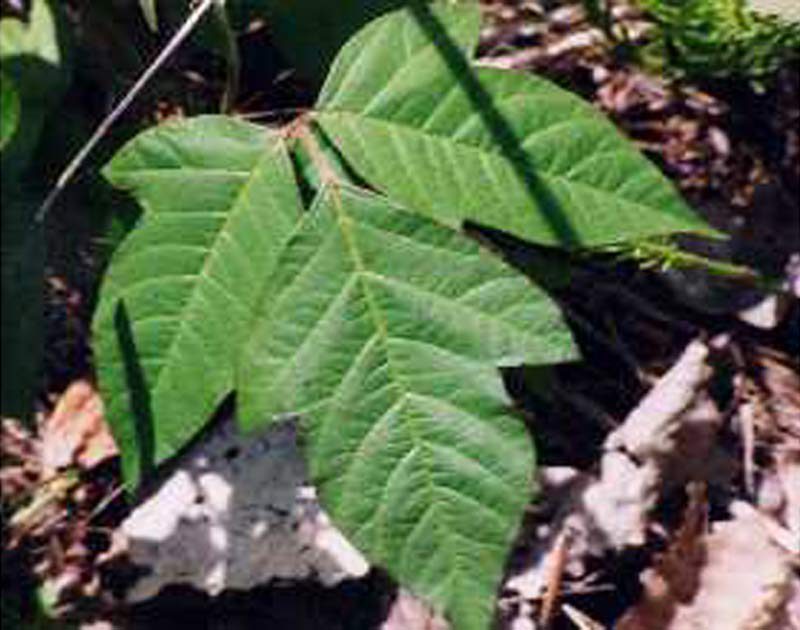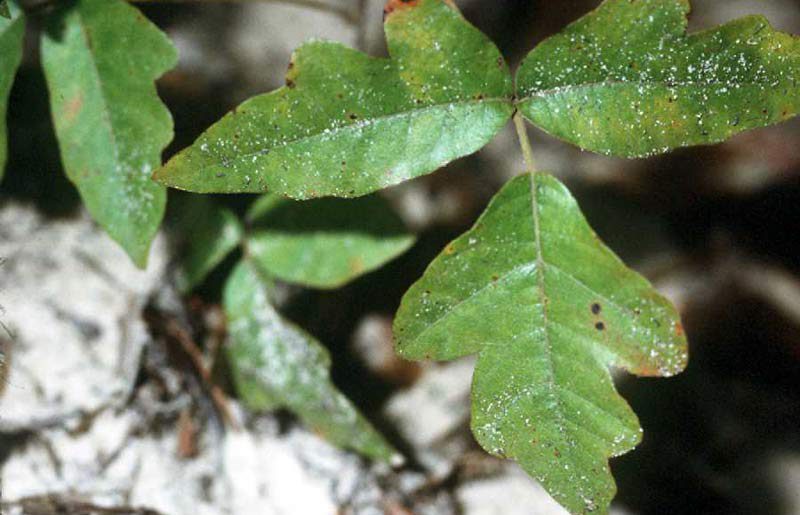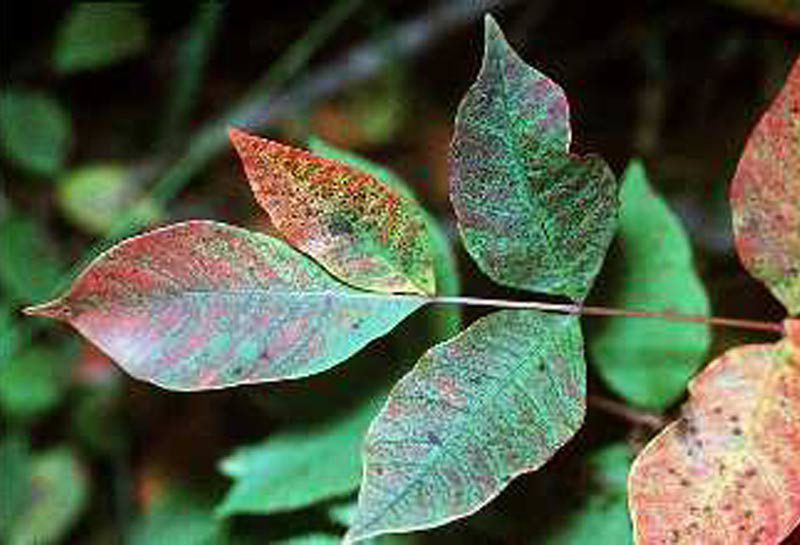You know the old adage “Leaves of three, let it be.” It’s referring to poison ivy and oak, and it’s true. With summer comes much more time spent outside, thus increasing the risk of coming in contact with these poisonous plants – and poison sumac – if you’re not careful.
Here’s how to tell them apart:
Poison Ivy

- Either a vine or a small shrub
- Three green leaves with either smooth or toothed edges
- Some plants have green-white flowers and/or white-yellow berries
Poison Oak

- Low shrub in the Eastern U.S.
- Three green leaves with rounded lobes and a fuzzy texture
- Some plants have yellow-white berries
Poison Sumac

- Tall shrub or small tree found in swampy areas
- 7 to 13 smooth-edged leaves
- Most plants have yellow-green flowers
- Most have white-green clusters of fruit
Within a few hours, you’ll know if you’ve contacted one of these plants. However, treatment is simple and will likely alleviate the symptoms and clear up the rash completely within a few weeks.
Symptoms
- Itching rash
- Blisters
Treatment
- Wash your affected skin areas immediately
- Take over-the-counter anti-itch cream, like hydrocortisone cream
- Take over-the-counter oral antihistamines, like Benadryl or Zyrtec
- Apply a cool compress to relieve itching
- If the rash becomes infected, spreads to more areas of your body, or if your temperature rises to 100° F, call your doctor immediately
Facts to know
- Poison ivy, oak and sumac are not contagious, but the plant oil can be spread through contact with clothing or tools that have been exposed to the plant’s oil
- Poison ivy, oak and sumac can be spread through contact with pets if they have come in contact with the plants
Have you come in contact with poison ivy or poison oak this summer? What kind of treatment did you use?
STAY INFORMED. SIGN UP!
Up-to-date agriculture news in your inbox!












I USED DAWN DIAS DETERGENT! WORKED GREAT!
SHOULD SAY DAWN DISH DETERGENT!
I ran hot water over the affected area to releive the itching and the doctor gve me a steroid cream to apply to the area. it was gone pretty easy.
It says it’s not contagious if there is a poison ivy blister on u and it busts and the liquid gets on someone else or even the couch it can be transferred to u.
If a person comes in contact with the oily chemical from an affected patient’s skin or clothing, then the urushiol could be passed on and a poison ivy rash may develop in a second individual. Direct contact with the oily chemical causes the symptoms and signs attributed to poison ivy.